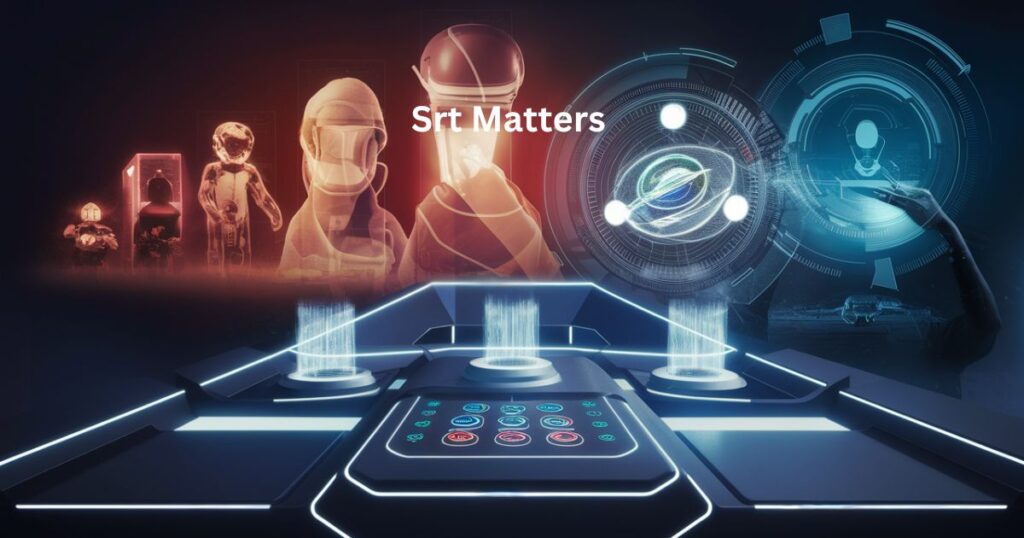Smart Response Technology is an innovative system used in modern communication devices. It analyzes incoming messages and suggests appropriate quick replies. This technology aims to save time and make digital interactions more efficient. It’s commonly found in smartphones, email clients, and messaging apps.
Imagine never being at a loss for words when replying to a text or email. That’s the promise of Smart Response Technology. It uses artificial intelligence to understand the context of messages you receive. Then, it offers you a selection of suitable responses with just a tap.
This clever feature learns from your communication style over time. It can handle simple queries, acknowledge messages, or even crack jokes. While not perfect, it’s continuously improving to provide more natural suggestions. Smart Response Technology is changing how we interact in our fast-paced digital world.
Key Takeaways Of Smart Response Technology
- Saves time by suggesting quick replies to messages.
- It uses AI to understand the context and generate appropriate responses.
- Adapt to your communication style over time.
- Available on various platforms like smartphones and email clients.
- Helps maintain communication flow in fast-paced digital environments.
Understanding Smart Response Technology

Smart Response Technology is a clever tool that helps you reply to messages faster. It works by reading incoming texts or emails and suggesting quick answers. This technology uses artificial intelligence to understand what people are saying.
People Read This Blog: What Is The Last Phrase Of The Technology
It then offers a few options for how you might want to respond. You can usually find this feature on your phone or in email apps. While it’s not perfect, it can help when you’re busy or unsure what to say.
The Mechanics Behind The Technology
The mechanics behind Smart Response Technology involve a complex interplay of algorithms and data analysis. At its core, the system uses natural language processing to interpret incoming messages. Machine learning models then predict suitable responses based on context and past interactions.
The technology accesses a vast database of common phrases and expressions. It also considers factors like message tone, sender relationship, and time of day. As users interact with the suggested responses, the system refines its predictions for future use.
Real-World Applications And Examples
Smart Response Technology has found its way into many everyday applications. Popular messaging apps like WhatsApp and Facebook Messenger use it to suggest quick replies. Gmail employs this technology to offer short, context-aware responses to emails. Smart speakers like Amazon Alexa use similar tech to provide concise answers to voice queries.
In customer service, chatbots utilize this technology to respond to common inquiries efficiently. Even some modern cars are incorporating smart response systems in their infotainment interfaces. These real-world examples show how this technology is streamlining communication across various platforms.
How Smart Response Technology Works

Smart response tech uses computer smarts to help you reply faster. It looks at the message you got and tries to understand it. Then it comes up with some quick answers you might want to use. These answers are based on how people usually talk to each other.
The tech learns from lots of chats it’s seen before. It tries to save you time by giving you easy reply choices. You can pick one of these quick replies or write your own if you want. As more people use it, the system gets better at guessing good replies. This tech helps make chatting online quicker and easier for everyone.
The Evolution Of Smart Response Technology
Smart response technology has come a long way. It started with basic autocorrect on phones. Then came predictive text suggestions. Voice assistants like Siri appeared next. They could answer simple questions.
Chatbots became popular for customer service. AI writing tools emerged to help with emails. Now we have advanced language models. They can engage in human-like conversations on many topics.
The Benefits Of Smart Response Technology
- Saves time by suggesting quick replies.
- Helps users write more professionally.
- Reduces typos and spelling mistakes.
- Learn from user habits to improve over time.
- Enables faster communication in multiple languages.
Challenges And Solutions In Smart Response Technology
Smart response tech faces hurdles like data privacy concerns. Accuracy in understanding context is another big issue. Some systems struggle with complex queries or unusual accents. Battery life can be a problem for portable devices.
To address these, developers are using better encryption methods. AI training on diverse datasets helps improve comprehension. Voice recognition is getting more sophisticated. New power-saving chips are extending battery life in smart devices.
Why Srt (Smart Response Technology) Matters?

Smart Response Technology (SRT) is changing how we interact with devices. It makes our gadgets smarter and more helpful. SRT can understand what we need and respond quickly. This saves time and reduces frustration for users.
Also Read This Blog: Is Construction Engineering Technology A Good Degree
With SRT, our phones and computers seem to know us better. It’s like having a clever assistant always ready to help. SRT is making technology feel more natural and user-friendly. As it improves, our digital lives will become smoother and easier.
Applications Of Smart Response Technology
Smart response technology is changing how we interact with devices. It helps our phones and speakers understand what we say. These systems can answer questions and follow voice commands. Smart homes use this tech to control lights and temperature.
In cars, it allows hands-free calling and navigation. Some cities use it to manage traffic flow better. Businesses use smart responses to help customers quickly. As the technology improves, we’ll likely see even more useful applications.
The Future Of Smart Response Technology

The future of smart response technology looks promising. Systems will become more intuitive and personalized. They may anticipate our needs before we even ask. Natural language processing will improve greatly.
Devices could understand context and emotions better. This may lead to more seamless human-computer interactions. Privacy concerns will need to be addressed carefully. Overall, smart responses could transform how we engage with technology.
Emerging Trends In Smart Devices
Smart devices are getting smarter every day. New gadgets can now predict what we need before we ask. Homes are becoming more connected, with appliances that talk to each other. Wearable tech is moving beyond just fitness tracking.
Augmented reality features are being built into everyday objects. Voice control is becoming more natural and widespread. Artificial intelligence is making devices more personalized and adaptive. These trends are shaping a future where technology seamlessly blends into our lives.
Potential Impact On Daily Life And Industries

The rise of smart technologies could reshape our daily routines. Homes may become more efficient, adjusting settings automatically. Work might shift, with some jobs changing or disappearing.
Healthcare could see faster diagnoses and personalized treatments. Transportation may evolve, featuring self-driving vehicles. Shopping experiences might transform, blending digital and physical. Education could become more flexible and tailored to individuals. These changes may bring both exciting opportunities and new challenges to navigate.
Conclusion
Smart Response Technology is an advanced system that reacts intelligently to various inputs. It uses data and algorithms to provide quick, relevant answers. This tech can be found in many devices, from smartphones to home assistants.
It learns from user behavior to improve over time. Smart Response Technology aims to make interactions more efficient and personalized. While helpful, it also raises questions about privacy and data use. As it evolves, it may change how we communicate and access information in our daily lives.
FAQ’s
What Is Smart Response Technology?
Smart Response Technology is a system that provides intelligent, automated reactions to inputs or situations.
How Does Smart Response Technology Work?
It works by analyzing data and using algorithms to generate appropriate responses quickly.
Where Is Smart Response Technology Used?
Smart Response Technology is used in various devices like smartphones, smart home systems, and virtual assistants.
Can Smart Response Technology Save Energy?
It can help save energy by optimizing power usage in appliances and buildings based on real-time needs.
Is Smart Response Technology Used In Healthcare?
Healthcare uses Smart Response Technology for tasks like patient monitoring and quick diagnosis support.
What Is The Smart Response Technique?
The Smart Response Technique refers to methods for creating adaptive, context-aware systems.
How To Use Intel Smart Response Technology?
To use Intel Smart Response Technology, enable it in BIOS and set up a small SSD to cache frequently used data from a larger hard drive.
What Is Meant By Smart Technology?
Smart technology generally refers to devices or systems that can adapt, learn, and respond intelligently to their environment or user inputs.








